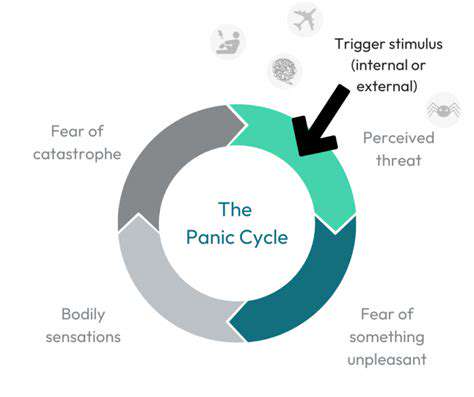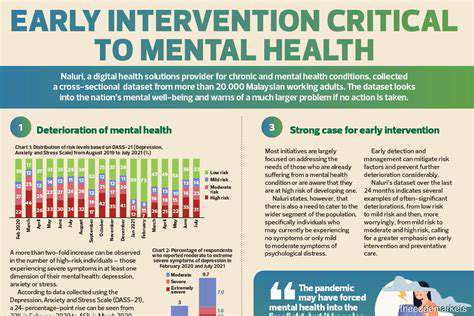Symptoms of Panic Attack in Adults: What to Look For
A rapid and pounding heart is one of the most frequently reported physical symptoms of a panic attack. This sensation of an accelerated heartbeat can be extremely distressing and often feels like the heart is about to burst from the chest. Individuals experiencing this symptom may also feel a sense of impending doom or fear of losing control. The rapid heart rate is often accompanied by other physical sensations, making the experience even more frightening and overwhelming. This symptom can range from a slight increase in heart rate to a significantly elevated and uncomfortable pace.
Recognizing this symptom as part of a panic attack can help individuals manage their anxiety and fear. Understanding that the rapid heart rate is a physiological response to the anxiety, and not a sign of a serious medical condition, is crucial in calming the situation.
Physical Symptoms of a Panic Attack: Shortness of Breath
Shortness of breath or difficulty breathing is another common physical manifestation of a panic attack. Individuals may feel like they can't get enough air, leading to a sense of suffocation or gasping for breath. This symptom can be particularly frightening, as it can mimic the feeling of impending death. The feeling of not being able to breathe can trigger a cycle of anxiety, making the experience even more intense.
This symptom is often accompanied by hyperventilation, where the person breathes rapidly and shallowly. The increased rate of breathing can lead to further physical sensations like lightheadedness or dizziness.
Physical Symptoms of a Panic Attack: Chest Pain
Chest pain is a terrifying symptom that can accompany a panic attack. This symptom often leads to individuals fearing a heart attack, which can heighten anxiety and distress. The pain may feel sharp, stabbing, or a dull ache, and it can vary in intensity. Often, the chest pain is not caused by a heart attack but instead is a result of the intense physical response to the panic attack.
It is essential to distinguish between chest pain associated with a panic attack and a potential heart attack. If you experience chest pain that is severe, persistent, or accompanied by other symptoms like shortness of breath or nausea, it's crucial to seek immediate medical attention.
Physical Symptoms of a Panic Attack: Sweating
Excessive sweating, or hyperhidrosis, is a common physical symptom associated with panic attacks. This symptom can manifest as profuse sweating, especially on the palms, hands, and face. The sweating itself can be uncomfortable and may lead to feelings of embarrassment or anxiety. The increased perspiration is a physiological response to the body's heightened stress response during a panic attack.
Physical Symptoms of a Panic Attack: Trembling or Shaking
Trembling or shaking is another frequently reported physical symptom of a panic attack. Individuals may experience shaking in their hands, legs, or throughout their entire body. This symptom can range from a slight tremor to a more pronounced and noticeable shaking, which can be quite unsettling. The physical trembling often mirrors the internal turmoil and fear associated with the panic attack.
The shaking is a result of the body's release of adrenaline and other stress hormones. Understanding this physiological response can help individuals manage their anxiety and recognize the warning signs of a panic attack.
Physical Symptoms of a Panic Attack: Nausea and Dizziness
Nausea and dizziness are physical symptoms that can be quite debilitating during a panic attack. The feeling of nausea can manifest as an upset stomach, a queasy sensation, or even the urge to vomit. Dizziness can range from lightheadedness to a sensation of spinning or unsteadiness. These symptoms can significantly impact a person's ability to function and can be very distressing.
These symptoms are often associated with the body's fight-or-flight response, where the body redirects resources to deal with perceived threat. Understanding that these symptoms are part of the panic attack response can help individuals manage the experience.
Physical Symptoms of a Panic Attack: Numbness or Tingling
Numbness or tingling sensations in the hands, feet, or other parts of the body can be a distressing symptom of a panic attack. These sensations can range from a mild prickling sensation to a more intense and uncomfortable numbness. The affected areas may feel detached or disconnected from the body. These sensations are often linked to the body's heightened state of arousal during a panic attack.
These symptoms, like many others, are often a result of the body's stress response. Understanding this physiological connection can help individuals better manage their anxiety and recognize the signs of a panic attack.
Recognizing the Psychological Components of Panic Attacks

Understanding the Roots of Psychological Complaints
Psychological complaints encompass a wide range of emotional, behavioral, and cognitive difficulties. These complaints can stem from various factors, including past traumas, current stressors, and underlying mental health conditions. Understanding the root causes is crucial for effective intervention and treatment. Identifying the specific triggers and contributing factors allows for a more tailored approach to addressing the issue. A thorough assessment is often necessary to determine the nature and severity of the problem.
Often, individuals experiencing psychological distress may not fully comprehend the source of their discomfort. This lack of understanding can hinder the initial stages of seeking help. It is essential to recognize that these feelings are valid and that support is available. Acknowledging the complexities of psychological complaints is a critical first step toward effective treatment.
Recognizing Common Symptoms
Common symptoms of psychological distress can manifest in a variety of ways, impacting an individual's thoughts, feelings, and behaviors. These symptoms can range from mild anxieties to severe mood disorders. It is important to note that experiencing some of these symptoms does not automatically indicate a mental health disorder. However, persistent symptoms that significantly impact daily functioning may warrant professional attention.
Recognizing the subtle signs and symptoms can be crucial for early intervention. Symptoms such as persistent sadness, overwhelming anxiety, difficulty concentrating, or changes in sleep patterns are all possible indicators. This recognition allows for quicker access to support systems and appropriate treatment.
Seeking Professional Help
Seeking professional help is a crucial step in addressing psychological complaints. A qualified mental health professional can provide a comprehensive assessment, diagnose any underlying conditions, and develop a personalized treatment plan. This plan could include therapy, medication, or a combination of both, tailored to the individual's unique needs and circumstances. Professional support is vital for navigating the complexities of psychological distress and fostering positive mental well-being.
Talking to a trusted friend, family member, or therapist can be incredibly helpful in the journey toward healing. Confidentiality and a safe space are paramount in discussing personal struggles. Remember, seeking help is a sign of strength, not weakness.
The Importance of Self-Care
Alongside professional help, self-care plays a vital role in managing psychological complaints. This encompasses a range of strategies to promote emotional well-being, including maintaining a healthy lifestyle through diet, exercise, and adequate sleep. Practicing mindfulness techniques and engaging in activities that bring joy and relaxation can significantly reduce stress and improve overall mental health. Implementing self-care strategies empowers individuals to actively participate in their own healing process.
Taking time for yourself, even in small increments, can make a big difference. Engaging in hobbies, spending time in nature, or simply listening to calming music can foster a sense of peace and reduce feelings of overwhelm. Prioritizing self-care is not selfish; it is essential for overall well-being.
